5 Reasons Why ABS Light Still On After Sensor Replacement – Easy Fixes
So, you’ve changed your wheel speed sensors hoping that the ABS light will finally turn off. But no! It’s still coming on. What went wrong?
Why is the ABS light still on after sensor replacement? In most cases, the ABS light comes on due to improper replacement of the sensors. If that’s not the case, the system requires a reset or other parts of the ABS are faulty. Low brake fluid and a malfunctioning hydraulic pump can also be the reason.
Let’s get to the bottom of the ABS light turning on issue and find out why you might be having it even after changing the sensors. Read on as we will also provide some easy fixes to your problem.
Why Is Your ABS Light Turning On After Sensor Replacement? Causes and Fixes
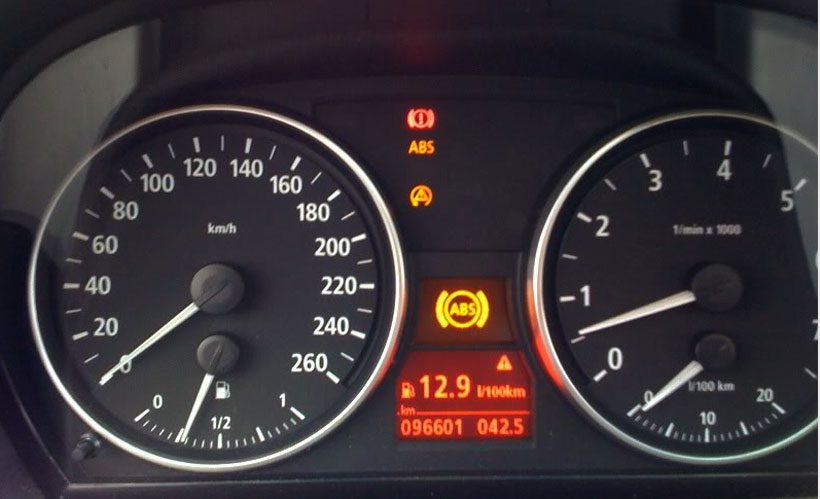
Here are some common reasons and potential fixes for a lit ABS light after sensor replacement:
Reason One – Improper Repair and Replacement
Whether you’ve replaced the wheel sensors by yourself or taken help from a mechanic, there’s always a chance of improper repair or installation.
So, if the repair or replacement of the sensors was unsuccessful, the Anti-Lock Braking System or ABS light will turn on.
Besides, the quality of the new sensors also matters. One user has pointed out that the cheap ones might not work at all and you have to replace them with high-quality wheel speed sensors.
How to Fix?
To resolve this issue,
- First, double-check the installation process to ensure that the sensor is securely connected and properly aligned. If you’re not sure how to check the installation, take help from a professional mechanic
- While you’re on it, check out the ABS ring placed on the wheel hub or driveshaft. It’s a round or annular metal ring with a series of evenly spaced teeth or notches. See if it’s rusted or corroded
- Get the ABS ring replaced by a mechanic and restart your vehicle to test
- In case the ABS light is still coming on, you must take help from a professional or contact your dealership
Reason Two – The System Requires A Reset
Here’s how the ABS warning light turns on. When the Anti-lock Braking System of your vehicle detects any malfunctioning component, it sends a signal to the computer and sets a Diagnostic Trouble Code or DTC.
The code varies depending on the vehicle brand. For instance, according to the sources, you’ll get the DTC C0226, C0246, and C0256 on a Toyota for a lit ABS light.
In most modern vehicles, the ABS resets itself after sensor replacement and the DTC is cleared off the system.
However, sometimes the DTC remains in the memory and the system triggers the warning light as a result. Therefore, you need to perform a manual reset to turn off the warning light.

How to Fix?
There are two ways to manually reset the ABS of a vehicle, including-
a. Disconnect Your Battery
- Before we start, turn off your ignition and car engine first
- Push your brake pedal for a few moments to shut off the electric system of your vehicle
- Locate your vehicle’s battery and disconnect the positive and negative terminals of the battery. This step will cut off the power supply to the ABS module.
- Keep the battery disconnected for approximately 5-10 minutes to allow any residual power to dissipate. By doing so, you’ve reset the ABS of your vehicle
- Now, it’s time to replace the battery. Reconnect your car battery and set everything as they were
- Turn on the ignition and let the engine idle for some time. Here, the ABS module will undergo a self-diagnostic process and initialize itself
- Observe the instrument panel for any warning lights or error messages related to the ABS. If no issues are detected, you have successfully reset the ABS
b. Reset with An OBD Scanner
- For this process, you’ll need an OBD scan tool to read the DTC and clear it off the system. With an OBD scanner, you can access the central computer of your vehicle
- Locate the OBD port first and connect the scan tool to it.
- Now, turn on your car’s ignition and set it to the second position. As a result, the car motor will remain turned off, but the instrument cluster lights will illuminate
- Once the tool is connected, you need to scroll and locate the ‘Clear Fault Codes’ option.
- When you’re done, turn off the ignition and see if the ABS light has turned off
Reason Three – Malfunctioning ABS Control Module
Apart from the wheel speed sensors, the ABS depends on several other key components. It includes the ABS control module, wiring, ABS fuse, hydraulic pump, etc.
If the control module malfunctions, it won’t recognize the new sensor and process the signal correctly. Hence, it will cause the ABS light to stay on after sensor replacement.
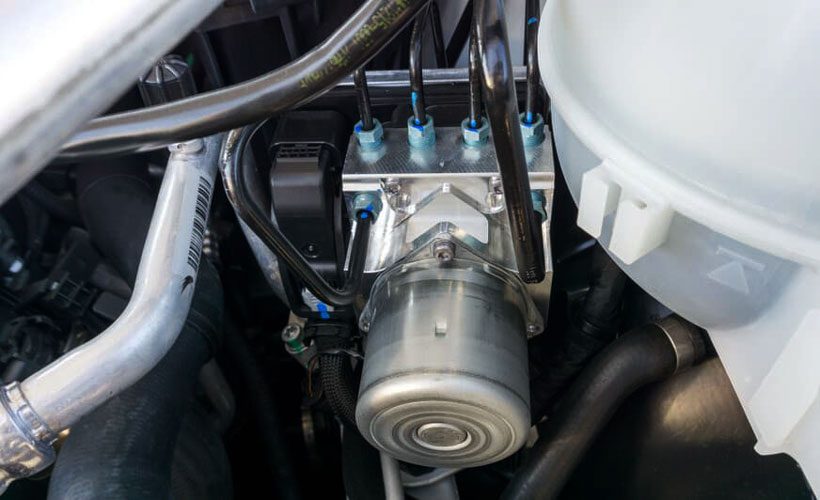
How to Fix?
The key to solving this issue is to detect whether the control module is the culprit. You need to separately inspect the ABS control unit, controller, ABS unit, and Electronic Control Unit (ECU) of your vehicle.
If a visual inspection doesn’t reveal any particular problem, use an OBD-II tool to extract trouble codes. Depending on your vehicle model, you might get the Code U0121 or U0140.
Try resetting the ABS following the process mentioned above. In case this doesn’t help, you need to replace the ABS control module or other related components based on the trouble codes.
As the process is long and complex, you must seek help from an expert mechanic for the diagnosis and replacement.
Reason Four – Damaged Fuse and Wiring
As the ABS features several wires, cables, and fuses, any damaged wires or blown fuse can cause the warning light issue. If your car’s speedometer has stopped functioning and your pedal brakes aren’t responding, you might have a broken wire somewhere in the system.
The ABS fuses often go bad due to an overflow of electricity. When the electric system starts to malfunction, it’s an indicator of a blown fuse.
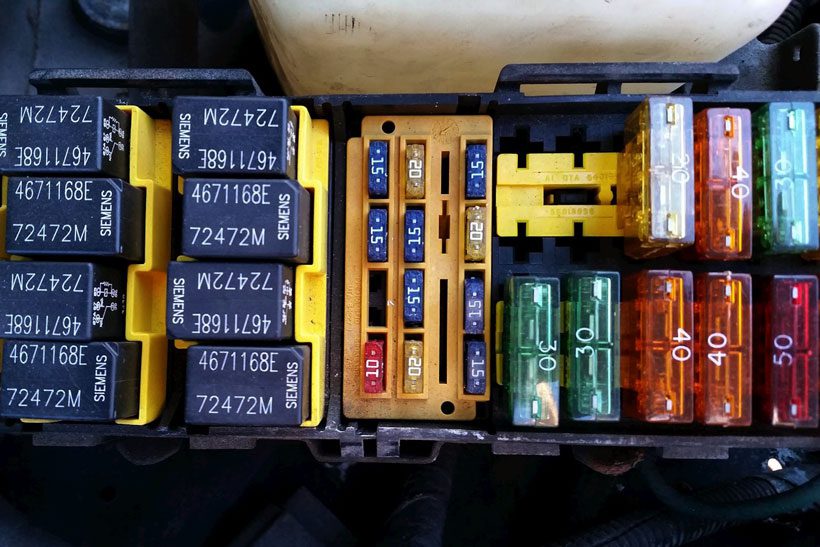
How to Fix?
Locate your car’s fuse box and check out the ABS fuses. The fuse box can be placed under your glove compartment or the dashboard. Refer to your owner’s manual to know the exact location of your car’s fuse box.
As for the wires, we recommend taking help from a professional as you need to remove several complex components of your car.
Once you find out the damaged wires or cables, get them replaced or repaired as necessary.
Reason Five – Low Brake Fluid
The ABS relies on hydraulic pressure to function properly. When the brake fluid levels are low, it will cause a decrease in pressure and trigger the ABS light.

How to Fix?
If the brake fluid level is below the recommended range, you need to top up the brake fluid reservoir. For this, carefully remove the reservoir cap and add the appropriate type of brake fluid. Check out your vehicle’s manual for the correct brake fluid specification.
Reason Six – Losing Hydraulic Pressure
For the ABS to function optimally, your vehicle must maintain a standard hydraulic pressure. When the pressure drops, it can indicate a problem with the brake system, such as a leak in the brake lines, a malfunctioning ABS pump, or a faulty hydraulic control unit (HCU).
As your control module detects this loss of pressure, it turns on the ABS light to warn you about the issue.
How to Fix?
The hydraulic system of your vehicle can lose pressure for many different reasons. It can be a malfunctioning hydraulic pump, a leak in the hose, low oil pressure, blocked pipes, or other defective components.
So, it’s best to get the hydraulic system checked by a professional and take steps accordingly.
Reason Seven – Damaged Hydraulic Circuits
Both the hydraulic system and ABS of your vehicle are closely connected. The components of these systems work in sync to make braking safer and smoother. If there is damage or malfunction in the hydraulic circuits, it can disrupt the proper operation of the ABS.
For example, a leak in the hydraulic lines or a faulty valve can lead to a loss of hydraulic pressure, resulting in ineffective modulation of the brake force during ABS activation. It can trigger the ABS light indicating a problem with the ABS and its hydraulic circuits.
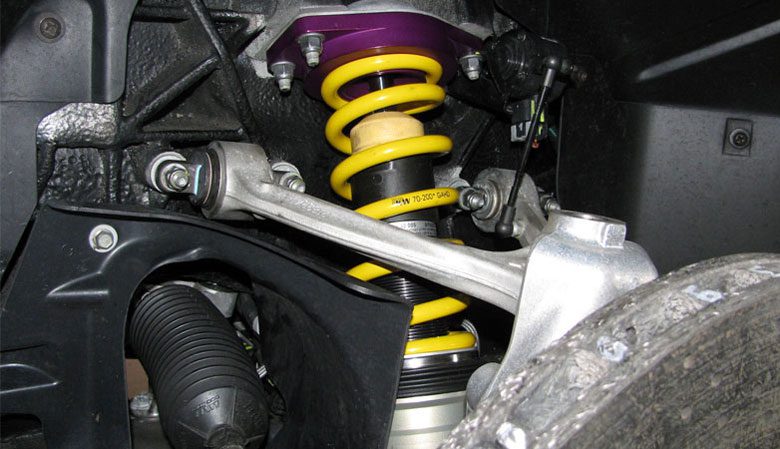
How to Fix?
As mentioned above, you must detect the faulty part of the hydraulic circuit first. The system is complex and composed of many different components such as hydraulic valves, reservoirs, actuators, hydraulic lines, accumulators, filters, etc.
Moreover, the location of the hydraulic circuit can also vary. It can be located near the engine compartment, suspension system, or convertible top. Once you locate the circuit, you need to thoroughly inspect all the components for damage or leaks. We recommend taking expert help to fix any damaged hydraulic circuits.
Reason Eight – Misplaced Emergency Brake
In most vehicles, the emergency brake and ABS function separately. However, if the two systems share the same components, a misplaced emergency brake can trigger the ABS light. When the brake isn’t enough in its place, it can keep the ABS light on.
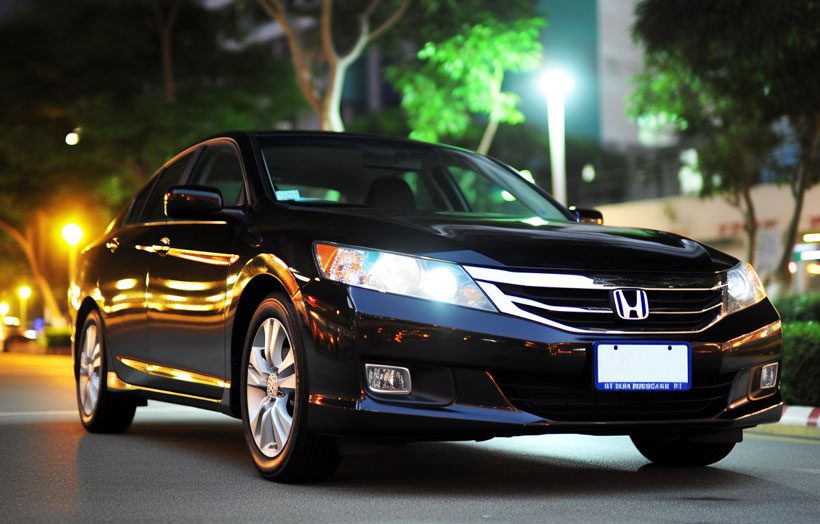
How to Fix?
Here, all you need to do is correctly place the emergency brake in the down position. The emergency brake lever is typically located between the front seats. It can be a hand-operated lever or a foot pedal.
Adjust the brake multiple times and see whether it goes deep enough to make the ABS light turn off. If not, seek expert help to get the emergency brake fixed.
If you’ve replaced the sensor and the ABS light is still on in your vehicle, you may find our article on Chevy Impala ABS light on helpful. This article provides specific information and guidance for addressing the ABS light issue in a Chevy Impala. Additionally, if you own a Dodge Ram 2500 and are dealing with an ABS warning light on, you can check out our article on Dodge Ram 2500 ABS warning light on for insights and potential solutions for this particular vehicle.FAQs
Let’s take a look at the most common queries car owners often have regarding ABS light issues.
If the ABS sensor is not working, the ABS warning light on your dash will turn on. The vehicle will display other symptoms such as a pulsating brake pedal, a noticeable decrease in brake responsiveness, and unusual noises or vibrations.
No, it’s not recommended to keep driving with the ABS light on. When you drive with an illuminated ABS warning light, the ABS may not function properly and it compromises your ability to brake safely in certain situations.
In most cases, you’ll have to reprogram a new ABS module. When a new module is installed, it typically needs to be programmed to work with the specific vehicle it is installed in.
Refer to your vehicle’s service manual or contact an expert mechanic to reprogram the ABS module after sensor replacement.
This programming process ensures that the ABS module communicates correctly with other vehicle systems and operates as intended.
Final Words
So, now you know what causes the ABS light still on after sensor replacement. If you haven’t followed the replacement process correctly, installed low-quality sensors, or haven’t fixed the stator ring on the wheel hub, the ABS light might stay on.
Faulty ABS components and low hydraulic fluid are also common reasons you must address. Be sure to follow our given fixes to easily get rid of the issue. However, if nothing else works, go to an expert mechanic and get your vehicle fixed as needed.

